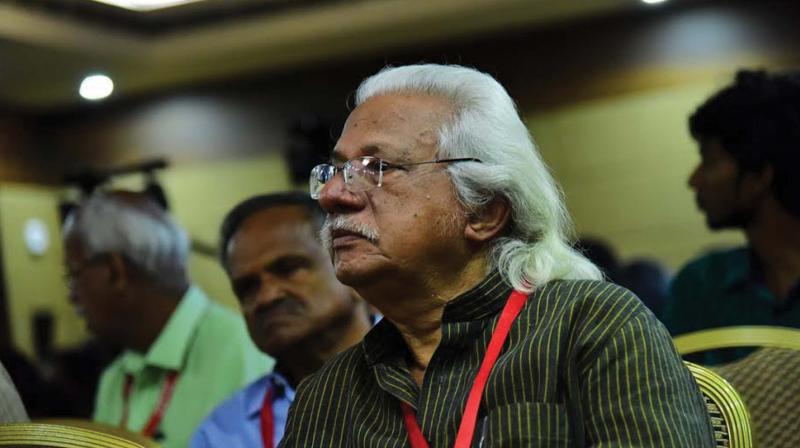Pinneyum world looks awkwardly unreal
Though an Adoor Gopalakrishnan film, the world that came alive on the giant screen looked bogus.

THIRUVANANTHAPURAM: Anyone watching ‘Pinneyum’ might suffer the dilemma of the film’s heroine. Towards the end, Devi is startled to find a stranger at her bedroom window in the moonlit dark. When the man whispers her name, she is seized by an intense conflict. The sound belongs to her long-lost husband, only her husband calls her so. But the face? “No, you are not my husband. You are an impostor,” she almost shrieks. A gasp of disbelief did escape this writer, too, while watching ‘Pinneyum’. We were told this was an Adoor Gopalakrishnan film but the world that came alive on the giant screen looked bogus.
Watching an Adoor film is like taking an un-guided tour through the extraterrestrial backwaters of the soul. It might perhaps be hard to intellectually pin down the images, or to fully comprehend what they mean, but we right away get the feel that we are in some spiritual space. In an Adoor film, like in any sacred land, the workings of a higher force are only felt, not really understood. In ‘Pinneyum’, the world feels unreal, not in a surreal sense but in an awkward way.
The film is inspired by the most notorious crime (the Chacko murder by Sukumara Kurup) perpetrated in the state post-Independence. Adoor Gopalakrishnan meditating on murder is a mouth-watering prospect; we know how illuminating it was when he put sloth (Elipathayam) and guilt (Nizhalkuthu) and power (Vidheyan) and loneliness (Anantharam) under his creative microscope. He places ‘Pinneyum’ in indeterminate period. At least it looks pre-liberalisation, pre-1991, because the height of luxury is a second-hand Fiat car.
Time isn’t the problem. What is utterly baffling is Adoor’s lack of curiosity. In a metaphorical sense ‘Pinneyum’ shows a harmless house sparrow abruptly, as if by magic, turning into a slimy man-eating reptile. It is not as if a storyteller cannot transform a humble bird into a monster reptile. Great raconteurs make up outrageous things, but also account for it. They tell us why such transformations take place. The meat of any fable is in the ‘why’. Adoor fails to serve the meat.
Leave alone the ‘why’, even the response to the transformation is laughably tame. When the gentle and submissive husband reveals his macabre plan to his wife in bed, the all-suffering morally upright wife behaves as though she was told something hurtful; she is only sad, not terrified. The ghastliness of the plan should have made her react as if she had spotted a python coiled near her, grazing her saree, in her cramped conjugal bed. She should at least have been repelled. Even her relatives, god-fearing types who never could have suspected that people killed for money, are easily pulled into the crime like mind-controlled cult followers.
In ‘Pinneyum’, it is as if the natural rhythm of life has been distorted. There is no freedom in the behaviour of the film’s characters; they walk too slowly, romance like zombies, and the pitch of their conversations frequently goes off-key. They use ridiculously pompous words that seem picked from the dustbin that extinct professional drama troupes had kept for obsolete usages. Most disconcertingly, it looks as though the characters in 'Pinneyum' are conscious that they are being watched as they go about their daily chores. The strain of keeping their instincts in check shows. Perhaps, this must be how people behave under a dictatorial regime.

